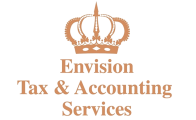All successful business owners either initially or over time become extremely proficient in their field of choice for it is by this growth of knowledge and wisdom which affords them the insight to make prudent decisions.
Every hour of a business owner's day, there are a series of important thoughts and operations that directly impact the profitability of a business. You are faced with making a positive impact towards bringing your business closer or further away from your goal. A company's financial statement is the measuring stick by which you are able to properly access your company's progress along the business continuum. This measurement, ultimately provides a clear view of the distance between where you are and where you want to be.
The Balance Sheet ...
A well-presented balance sheet in good form will break out the assets and liabilities separating the long-term from the short-term items as well as a separate section for equity. Short-term items are those that are anticipated to be utilized/spent/collected/paid within the next twelve-month period. Long-term assets/liabilities are those whose ultimate disposition is to be addressed beyond the following year and not within it.
Balance sheets begin with the current asset section with cash usually listed first and then with accounts receivable and inventory following next. Any other short-term items would also be included in this section with care given to presentation to ensure that like kind items and accounts are appropriately detailed and segregated.
Subsequently the long-term assets of a business are listed, consisting of items that will be held by a business beyond the next twelve-month period. In this category you will find a company's fixed assets such as equipment, furniture and fixtures, vehicles, and leasehold improvements along with their corresponding amortization. Other long-term assets might include any deposits the company has paid or other items anticipated to be an asset beyond the next year.
Next on a company's financial you will find the current liabilities section, which will list all of the items a firm owes and believes it will need to address short term. This section typically will have included in it accounts payable, payroll and sales taxes payable, customer deposits, and any short term portion of any notes payable (the long term principal portion of the note will appear on long term debt section which should immediately follow the current liability section).
The balance sheet ends with the equity/stock section which details a company's stock, retained earnings/capital account, distributions/dividends, and the annual year to date net income (loss) of the business for which most accounting packages rolls forward from the profit and loss. Your distribution account should be closed at the end of each year to the retained earnings/capital account at the end of each year so that the net worth of a business might be tracked.
Your Profit & Loss Statement...
A well presented financial statement will be broken out in the sales section, cost of goods sold, and general and administrative expenses. Many businesses will break out their sales and cost of goods sold accounts into several categories that might be useful for review and analysis.
When reviewing your company's financial, it is usually best to review your profit and loss being sure to show the current period under review as well as the year to date totals. This will have the added advantage of reviewing specifically the most current operations for any significant variances or trends as well as contemplation of where you stand vs. your annual and year to date goals. Your financials are best reviewed and presented when you also add a column which calculates items as a percentage of sales which allows the reviewer to have a good grasp/rule of thumb of which to measure operational results.
Often financial statements are unduly cluttered with accounts that have no financial, operational, or tax significance. A company's statement should be concise giving the business owner as well as your Accountant meaningful information without unnecessary data. A financial statement, like a heart monitor in a hospital, is the barometer that measures the lifeblood of a business, giving its holder critical and insightful information that is needed for all short and long term operational and strategic decisions.
Preparing and Reviewing Financial Statements is one of the most critical aspects to having information to properly manage your business. Envision Tax & Accounting's exhaustive experience in this field will help guide and direct you to understanding this critical aspect of your business.
